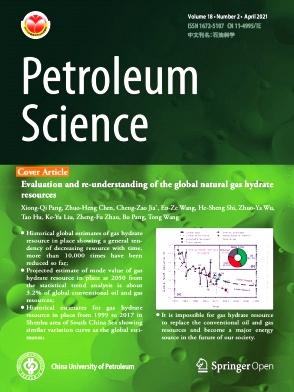Development and evaluation of organic/metal ion double crosslinking polymer gel for anti-CO2 gas channeling in high temperature and low permeability reservoirs
IF 6
1区 工程技术
Q2 ENERGY & FUELS
引用次数: 0
Abstract
CO2 flooding enhanced oil recovery (CO2-EOR) represents a significant technology in the low permeability reservoir. With the fractures and heterogeneity in low permeability reservoirs, CO2-EOR is susceptible to pessimistic gas channeling. Consequently, there is a need to develop conformance control materials that can be used in CO2-EOR. Herein, to address the challenges of low strength and poor stability of polymer gel in high temperature and low permeability reservoirs, a new organic/metal ion composite crosslinking polymer gel (AR-Gel) is reported, which is formed by low hydrolysis and medium to high molecular weight polymer (CX-305), organic crosslinking agent (phenolic resin), and aluminium citrate (Al(III)). The crosslinking of Al(III) with carboxyl group and organic/metal ion double crosslinking can construct a more complex and stable polymer gel structure on the basis of traditional chemical crosslinking, to cope with the harsh conditions such as high temperature. The structure–activity relationship of AR-Gel was revealed by rheology behavior and micro-morphology. The applicability of AR-Gel in reservoir was investigated, as was its strength and stability in supercritical CO2. The anti-gas channeling and enhanced oil recovery of AR-Gel were investigated using low permeability fractured cores, and the field process parameters were provided. The gel can be used to meet supercritical CO2 reservoirs at 110 °C and 20,000 mg/L salinity, with long-term stability over 60 days. The plugging rate of AR-Gel for fractured core was 97%, with subsequent CO2 flooding resulting in an enhanced oil recovery by 34.5%. AR-Gel can effectively control CO2 gas channeling and enhanced oil recovery. It offers a new material with high strength and temperature resistance, which is particularly beneficial in the CO2 flooding for the conformance control of oil field.
求助全文
约1分钟内获得全文
求助全文
来源期刊

Petroleum Science
地学-地球化学与地球物理
CiteScore
7.70
自引率
16.10%
发文量
311
审稿时长
63 days
期刊介绍:
Petroleum Science is the only English journal in China on petroleum science and technology that is intended for professionals engaged in petroleum science research and technical applications all over the world, as well as the managerial personnel of oil companies. It covers petroleum geology, petroleum geophysics, petroleum engineering, petrochemistry & chemical engineering, petroleum mechanics, and economic management. It aims to introduce the latest results in oil industry research in China, promote cooperation in petroleum science research between China and the rest of the world, and build a bridge for scientific communication between China and the world.
 求助内容:
求助内容: 应助结果提醒方式:
应助结果提醒方式:


